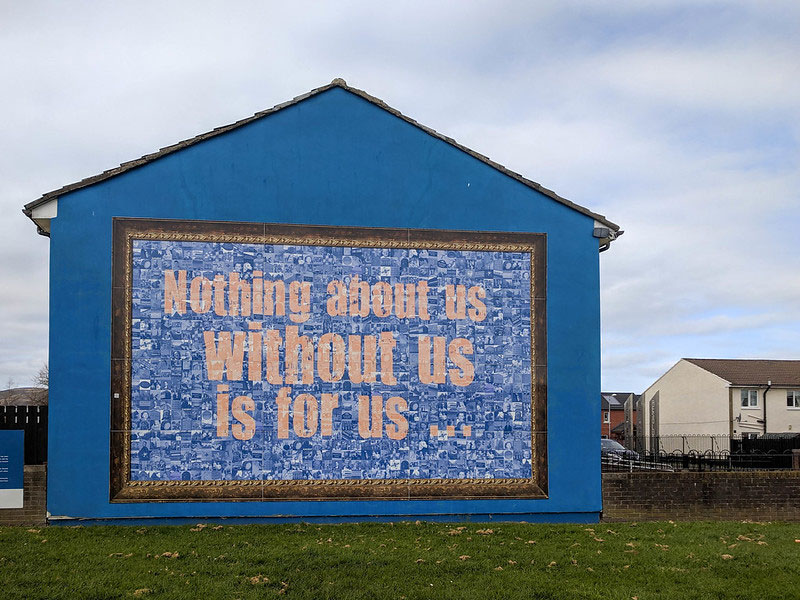Over the past six months, we have all watched or maybe even been a part of fast-paced online activism that has led to some change. Over this past week, when Susan G. Komen for the Cure announced it would no longer be funding Planned Parenthood because it was under congressional investigation, a virtual firestorm was unleashed. The rule that Komen pointed to as the basis for its decision had, in fact, just been ratified and some excellent investigative journalism from The Atlantic pretty conclusively indicated that the rule was made specifically to exclude Planned Parenthood.
The backlash was fascinating. It rolled out first among individuals on the Internet, in the broadcast media and in Internet-based publishing. It then moved to Congress, where two dozen senators signed a letter of protest, and then to Komen’s affiliates in the states. Online, the message board at Komen itself was packed with statements from individuals who had supported the organization but were now declaring that they would take that money and go elsewhere. And there were also at least four major petition efforts that collected many hundreds of thousands of signatures in very short order.
We are appalled at Komen’s apparent lack of understanding about what their announcement was likely to unleash. An organization dedicated to women’s health clearly will have many supporters who are also pro-choice. Did Komen think they would not mobilize quickly enough to make a difference?
If they thought that these individual supporters would wait around for a single champion to emerge in reaction, devise a campaign and set about finding its supporters, they are out of touch with 2012. There were many nodes of action in the response to Komen and that created many consequences: withdrawal of financial support, alienation of affiliates, a blowing up of its own brand, and a scrutiny of, “What the heck is Komen, anyway?” That last question has not been put down and it should not be put down any time soon.
But this is not the first time in the last six months that we have seen citizen action rise up in a way that is coordinated only by like-mindedness on general principles. On January 18th, we saw a response to proposed legislation regarding the Stop Online Piracy Act (SOPA) and the Protect Intellectual Property Act (PIPA)that included a number of major Internet actors like Google and Wikipedia but also an enormous number of individuals acting in concert to oppose these bills (which had some very powerful and well established lobbying interests backing them). According to SOPAStrike.com, which helped organize the protest, 75,000 websites participated by blacking out their logos, “going dark” or otherwise logging their protest. According to Google, 4.2 million people signed its anti-SOPA petition on January 18th, and according to Twitter, between 12 a.m. and 4 p.m. that same day, more than 2.4 million SOPA/PIPA-related tweets were sent out.This infographic provides an overview of the digital protests.
While we would characterize the anti-SOPA/PIPA campaign somewhat differently because of the central involvement of big players with their own institutional interests, it is related to the Komen backlash. In a discussion at the Sundance Film Festival, Chris Dodd, the former senator who is now president of the Motion Picture Association of America (MPAA), called the SOPA/PIPA response “a watershed event.” Dodd said that opponents’ “ability to organize and communicate directly with consumers” was a game-changing phenomenon he hadn’t seen in more than three decades in public office. NATO President John Fithian chimed in, saying the response was “the greatest backlash I’ve ever seen. This was historic.”
Other recent events might be viewed in the same online activism category, though each had its own unique form and purpose. On November 5th, we saw Bank Transfer Day, which was sparked by a combination of factors—the increased focus on financial institutions brought by Occupy Wall Street; the imposition of additional fees by one of its targets, Bank of America—and aided by some online organizing. According to a recent study by Javelin Strategy and Research, 610,000 people cited Bank Transfer Day as being the reason they switched their funds from big banks to credit unions between October and December. Note the number of Google searches for “Bank Transfer Day,” according to the January 26, 2012 blog of Javelin’s James Van Dyke:
Sign up for our free newsletters
Subscribe to NPQ's newsletters to have our top stories delivered directly to your inbox.
By signing up, you agree to our privacy policy and terms of use, and to receive messages from NPQ and our partners.
“Bank Transfer Day and the Occupy Movement have received tremendous attention, and for the first time we have market research data to measure the impact on the financial services industry. Javelin’s research estimates that 5.6 million U.S. adults with a banking relationship changed providers in the past 90 days. Of those switchers, 610,000 US adults (or 11% of the 5.6 million) cited Bank Transfer Day as their reason and actually moved their accounts from a large to a small institution. With a Google search of ‘bank transfer day’ returning fully 22,000,000 responses we’re not surprised that these angry bank-switchers represent nearly a three-time increase over the amount of people who took their funds out of large banks for highly-similar reasons during the previous 90-day period in 2011.”
Another example of this dynamic occurred in response to indications that the Obama White House might choose a less than tough approach to the Wall Street honchos whose investments led the U.S. into a national economic meltdown. A social media backlash hit the Obama administration just before the State of the Union address, and the president surprised his listeners with a commitment to a muscled-up federal task force to be coordinated with New York Attorney General Eric Schneiderman. The task force is supposed to go after financial fraud with more vigor than the settlement notions previously floated by Treasury Secretary Timothy Geithner and HUD Secretary Shaun Donovan. Given Schneiderman’s commitment to pursuing fraud, his appointment to the task force reflects the mobilization—largely online—of activists, including many progressives, to pressure the White House to be less forgiving to the nation’s mortgage lending malefactors.
Meanwhile, we are watching the hacking interventions of Anonymous in aid of WikiLeaks, Occupiers, and those fighting against what they see as overly-restrictive Internet copyright laws. And we are watching the increasingly linked nature of protests around the world.
We are all entering new political territory. Christopher Dodd is right when he says that the game has changed and that the moment is a watershed. But when we consider what might be ahead, the terrain is very unclear. Large, well-heeled systems are good at adjusting and, as we all know, power concedes nothing without a struggle. But those of us who have an interest in engaging in democracy may have other worries as well.
In the Komen case, it was very clear that Jeffrey Goldberg of The Atlantic played a huge part in helping to ground the response with his excellent article confirming that the defunding was a conscious political act. Do we understand the critical importance of good journalism/information in these efforts and are we protecting it? Do we have the attention span to look more closely at the breast cancer cause-marketing industry? And what does it mean when we align ourselves with the likes of Google? Not to sound paranoid, but their organizing power (in terms of how information is received) is enormous, but they have strong institutional interests that many are beginning to feel may not be completely aligned with that “don’t be evil” slogan of theirs.
We are all entering a new era in which technology is enabling activism in a different way. Critics might suggest that the ability of people to mobilize quickly online has a political and perhaps ethical downside. Defenders of SOPA or Komen might argue that these powerful and almost-instantaneous backlashes distorted the issues and undermined a more measured political dialogue that might have occurred in a different media environment. It doesn’t appear to us that Komen’s shifting explanations would have been helped by more time and less activism than would have occurred without activists’ access to new technology. But an exploration of the ethics of the new uses of technology always lags behind the actual applications of new technologies. We would love NPQ readers to weigh in on the fast-paced online activism that showed its power and potential in these cases, inducing a national nonprofit, Congressional legislators, and the President of the United States to back off positions or make major modifications in their stances.












